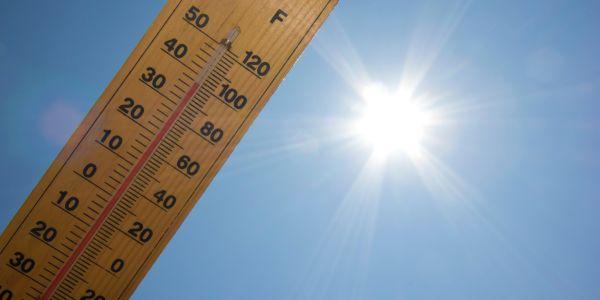UP TO THE MINUTE
OSHA’s heat illness prevention rulemaking advances: Implications for the roofing industry

By Cotney Consulting Group.
Roofing companies can safeguard their workforce and ensure compliance with new regulations by staying informed, engaging in the rulemaking process and proactively implementing heat illness prevention measures.
With summer approaching, the roofing industry must stay vigilant about the safety of its workers in rising temperatures. The Occupational Safety and Health Administration (OSHA) is making significant strides toward implementing a Heat Illness Prevention Standard that will impact both outdoor and indoor workers. This development is crucial for roofing professionals who often work in extreme heat conditions. Here’s what you need to know about the latest updates and how they may affect your business.
Background and coalition efforts
On May 8, 2024, OSHA announced it is moving closer to publishing a proposed Heat Illness Rule. Acting Labor Secretary Julie Su confirmed that OSHA aims to release a Notice of Proposed Rulemaking later this year. This rule has been in the works for several years, with significant contributions from a coalition of national employers and trade associations, including those in construction, manufacturing and warehousing.
Phases of rulemaking
The rulemaking process has been divided into multiple phases. During phase one, the coalition responded to OSHA’s Advanced Notice of Proposed Rulemaking by providing detailed feedback and recommendations. This phase included significant engagement with NACOSH and its Heat Working Group.
In phase two, the coalition participated in the Small Business Regulatory Enforcement Fairness Act (SBREFA) stage, which focuses on minimizing regulatory impacts on small entities. Coalition members served as Small Entity Representatives (SERs), giving them a first look at the draft regulatory text and a chance to influence the final recommendations of the Small Business Advocacy Review (SBAR) Panel.
Current status and recent developments
As of April 24, 2024, OSHA presented a preliminary structure for the Heat Illness Prevention Standard to the Advisory Committee on Construction Safety and Health. The committee unanimously recommended moving forward with a Notice of Proposed Rulemaking. Key changes in the proposal, influenced by coalition efforts, include:
- Increased temperature triggers: Initial and high heat triggers have been raised. The initial trigger is now set at an 80-degree Fahrenheit heat index, up from 76 degrees. The high heat trigger has been raised to a 90-degree Fahrenheit heat index from 83 degrees.
- Performance-oriented standards: The proposed rule emphasizes flexible, performance-oriented approaches centered on training rather than rigid mandates.
However, there are areas where OSHA has not yet adopted the coalition’s recommendations. These include considering local environmental conditions, providing flexible rest break options and reducing prescriptive drinking water requirements.
Implications for the roofing industry
For roofing contractors, these proposed changes will have direct implications. The raised temperature triggers may offer some relief, as stricter measures will be required only at higher temperatures. However, the industry must prepare for comprehensive training programs to ensure workers are aware of heat illness symptoms and prevention methods.
The coalition’s ongoing efforts aim to shape the final rule to balance worker safety with practical implementation. As the final phase of rulemaking approaches, roofing industry stakeholders must stay informed and engaged.
Preparing for compliance
To ensure compliance with the forthcoming Heat Illness Prevention Standard, roofing companies should take several proactive steps:
- Develop a heat illness prevention plan (HIPP): Create a comprehensive plan that includes identifying high-risk tasks, worker training and emergency response protocols. Your plan should align with OSHA’s recommendations and consider local climate conditions.
- Implement acclimatization programs: Gradually increase workers’ exposure to hot environments to help them acclimate. OSHA’s standards will likely include guidelines for acclimatization, so incorporating these practices will facilitate compliance.
- Enhance monitoring and supervision: Implement systems to monitor workers for signs of heat illness. Train supervisors to recognize symptoms and take appropriate actions. This could include mandatory rest breaks, hydration reminders and providing shaded areas.
- Provide adequate hydration: Ensure cool, potable water is readily accessible at all job sites. Educate workers on the importance of staying hydrated and recognizing the signs of dehydration.
- Modify work schedules: Adjust work hours to avoid the hottest parts of the day. Consider implementing shift rotations to reduce the duration of exposure for each worker.
- Invest in personal protective equipment (PPE): While the standard may not mandate specific PPE for heat, consider providing cooling vests, hats and other gear designed to reduce heat stress.
- Stay updated on regulatory changes: Follow developments closely as OSHA finalizes the rule. Participate in industry forums and discussions to stay informed and provide feedback.
Conclusion
The roofing industry must prioritize worker safety as temperatures rise. OSHA’s forthcoming Heat Illness Prevention Standard aims to protect workers from the dangers of heat stress and illness. Roofing companies can safeguard their workforce and ensure compliance with new regulations by staying informed, engaging in the rulemaking process and proactively implementing heat illness prevention measures.
As we await the finalization of OSHA’s Heat Illness Prevention Standard, roofing professionals must prepare now. This proactive approach will ensure compliance and demonstrate a commitment to the health and safety of your workers, ultimately benefiting your business and the industry as a whole.
Learn more about Cotney Consulting Group in their Coffee Shop Directory or visit www.cotneyconsulting.com.



















Comments
Leave a Reply
Have an account? Login to leave a comment!
Sign In